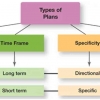Maria Grace Silia Monika Sari
Gloria 1 Christian Junior High School, Surabaya
2021
Abstract
This article reviews the relevant literature of language learning strategies by examining the background, the issues along with the definition, the characteristics, the categories and the functional framework. The intertwined relationships among person, task, context and strategies are illustrated with the tetrahedral model proposed by Gu (2003).
The article also discusses the significance of language learning strategies for second language learning and the effectiveness of strategy instruction before presenting the pedagogical implications for second language teachers. The purpose of this article is to provide an overview of language learning strategy studies by summarizing the important aspects and to highlight the implications for integrating language learning strategy instruction into ESL classrooms so that the teachers can have a meaningful way to focus on their teaching efforts and the learners can become more efficient in their efforts to learn a second language as well.
Keywords: learning strategies, second language teaching, strategy instruction
Introduction
Since the early 1970s, a historic focus-shifting in ESL studies has been from how teachers teach to how students learn (Wenden, 1987). Researchers try to search for a deeper understanding of the nature of the second language learning process. There is an increasing awareness that a conception of language learning is an essential component of language teaching theory, and that efficient language teaching must work with rather than against the natural processes of language learning (Cohen, 1998).
Increased interest in language learning strategies has resulted in a movement towards learner-centered language learning. This movement can be said to begin with attempts to identify the characteristics of good language learners (Rubin, 1975; Stern, 1975). There has since been a proliferation in the publications on learning strategies (e.g., Cohen, 1998; Graham, 1997; O'Malley & Chamot, 1990; Oxford, 1990; Wenden & Rubin, 1987).
This article reviews the background of language learning strategies, summarizes key points from the language learning strategy literature and then suggests some implications for classroom practice.



![Steam and Schemes [4]](https://assets-a1.kompasiana.com/statics/2019_kompasiana/desktop/images/headline-blank-vsmall.jpg?t=t&v=100&x=100&info=meta_related)





